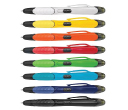Online Credit Card Fraud Signals
Fraudulent credit card transactions are one of the most frustrating challenges that ecommerce website owners face. Here are some tips for singling out a bad apple before accepting an order from a criminal. This is a worldwide problem that plagues all types of businesses.
Here are four factors to look at when trying to determine if you will be safe filling the order. The tricky part is that any one of these factors could mean that it is fraudulent, but nothing is definite. If an order you receive has any of the issues listed below, you should take a close look at the order and check into it further.Here is a breakdown of each of the six “red flags” on ecommerce orders.
Address Verification System Mismatch
Merchant processors provide an Address Verification System, called AVS for short. There are AVS codes provided to let merchants know if the billing address matches what the bank has on file as the address that the credit card bill is sent to. This is not widely used here in Australia, but is supported by some banks, and mostly in the United States. It does not always help if the order is being shipped to a different address than the billing address, it could be a problem, or might very well still be legitimate.
Security Code Mismatch
This is another system that is not widely used here in Australia, but is supported by some banks, and mostly in the United States. The security code, also called the CID or CVV code is the 3 digits on the back of Visa and Master Cards.
Express Shipping
Express shipping and urgency of an order can be another red flag. Obviously, it can also just mean that a legitimate card holder is in a hurry to receive their merchandise. So, the express shipping red flag comes into play when other factors are present, such as a combination of next day shipping, an alternate shipping address and free email address all together should warrant some serious consideration as fraudulent.
Free Email Service
If the customer has a free email service, it could be a sign and should cause the red flag to raise if there are any other factors present, such as shipping to a different shipping address and express shipping. Hotmail and Yahoo! Mail are the two biggest offenders. Even though Gmail is free, it seems that credit card thieves do not want to try their luck with Google, since they are known for keeping so much information.


















